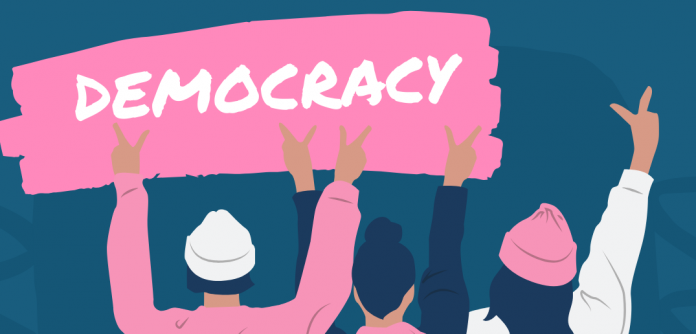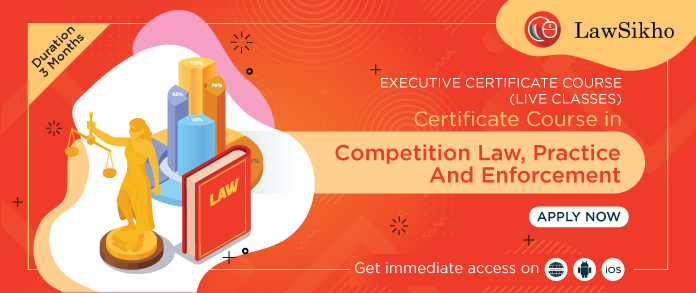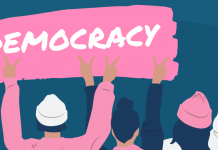This article has been written by Nimisha Dublish of Vivekananda Institute of Professional Studies, GGSIPU, Delhi. The article explains the difference between democracy and a republic, along with their detailed meaning.
This article has been published by Sneha Mahawar.
Table of Contents
Introduction
There have been several debates in the country in the political arena. The debates have played a very major role in shaping the politics and economy of India. The tradition of debates is very ancient and acts as a way to put forth the views and ideologies of people in the public domain. India has struggled for independence and has acquired it after so many years. Now India is a democracy. However, there exists another aspect of politics, i.e., republic. In both a republic and a democracy, the people of the nation are given the power to be a part of the representational political system. The citizens are empowered to elect and choose the representative who shall protect their interest. In both the systems of democracy and republic, the officials who are elected, take an oath to protect the interests of the citizens.
The limits that law places on the government define the difference between a democracy and a republic. In both the forms, a representational system is followed, which means politicians are elected by the citizens to represent their interests and form a government. Nowadays, most modern countries are democratic republics, and their constitutions can be amended by the elected government.
What is a democracy
A form of government where all citizens have the right to equal participation, directly or through their elected representatives, in the development and law making is known as a democracy. In this form of government, the voice of the majority is given preference over the minority, and the people are able to choose their own government. Once the majority government is established, the minorities have no say. Moving back to the origin of the word democracy; it is derived from the Greek words ‘demos’ meaning people and ‘kratos’ meaning rule. In simpler words we can say that democracy means “rule by the people”. Democracy allows the people to take part in the government and its political agendas. Back in November 1863, Abraham Lincoln gave a definition of democracy that was widely accepted by the world. The definition says,”…a government of the people, by the people, for the people…”
In democracies, the powers of the top rulers are put into limits by the constitution. Separation of powers and responsibilities is done to protect the rights and liberties of the people. In pure democracies, the citizens eligible to vote take an equal part in the lawmaking process. In other words, the majority in a pure democracy has all the power, whereas the minority has little or no power at all.
In a representative democracy, which is also known as an indirect democracy, the eligible citizens are free to vote and elect the officials who shall pass laws and formulate public policies. The elected representatives take care of the needs and viewpoints of the people. In participatory democracy, the citizens who are eligible to vote are required to vote for the appropriate policies. The representative is responsible for implementing these selected policies for the people. This gives the power to the people to decide the social and economic direction of the nation and its political operations. Both the representative and participatory democracies share similar ideas and adopt similar processes. However, participatory democracies involve a higher level of citizen participation than representative democracies. There remains almost no country that specifically applies a participatory form of government. Most of the representative forms of democracies use citizens as a tool for social and political reform.
What is a republic
The word republic is derived from the Latin phrase res publica which means ‘public affair’. In this form of government, social and political affairs are considered matters of public concern. In simpler words, a republic is a representative democracy in which the head of the state is elected, such as a president who serves for a limited time period. Since the citizens govern the nation through their representatives, the republics can be differentiated from the democracies on various terms. The republic is not only associated with democratic countries but also with other forms of governments like aristocracies, oligarchies, and monarchies in which the heredity of heads does not follow. Representatives are elected to make the laws, whereas an executive is also appointed to enforce the laws made by the representatives. To protect the minorities from the arbitrary whims of politics, representatives protect the inalienable rights of the minority citizens.
Difference between democracy and republic
| S. No. | Parameters | Democracy | Republic |
| 1. | General philosophy | The people of a democracy have the power over how they are governed. However, the kings are seen as a threat in a democracy to the innate rights of the citizens. All citizens have an equal say in the decision made by the government. | The republics are against the idea of forming a government by a single person. The citizens in a republic have equal say and have the power to make the decision through their elected representatives. To safeguard the interests of the minority, the inalienable rights of each individual is protected by the government. |
| 2. | Definition | In a democracy rule by majority is followed. People may also elect representatives. There is no such protection given to the minority’s interest. | The Republic follows the concept of representative democracy. |
| 3. | System | Democratic political system is followed. | The Republican political system is followed. |
| 4. | Structure | The social structure varies from state to state. Democracies resist the system of separation by class both politically and economically. | The structure is not so different from the democracies. Here also, the social structure varies from state to state. Separation by class remains the main goal to resist both politically and economically. |
| 5. | Economic system | Democracies are the free market economies with the policies chosen by the elected representatives. | The policies on the free economic markets are made by the people’s representatives. |
| 6. | Freedom to profess religion | In democracies freedom of religion is given but the majority deemed to enforce their religious practices over the minorities. | There exists constitutional prohibitions for interfering with other’s religion. So every person has a right to profess the religion of their choice. |
| 7. | Main elements | Majority rules and free elections | Individuals rights and free elections |
| 8. | Country’s examples | Australia, New Zealand, etc. The United Kingdom is also a democracy but with a monarch. | The United States of America (USA) is a democratic republic. |
| 9. | Types | Direct democracy, Parliamentary democracy, Presidential democracy and Representative democracy. | Democratic Republic and Constitutional Republics. |
| 10. | Government restrictions | In democracies the majority can impose their will and decisions on minorities. | In republics the majority cannot impose their will and decision on minorities and their certain inalienable rights cannot be taken away. |
| 11. | Disadvantages | Majorities abuses the rights of minorities by imposing their will and decisions . | Since the rights of the minorities are taken care of, there are constant debates and deadlocks. |
History of democracies and republics
If we look back into history, then the democracies have proved to be older than the republics. However, it is difficult to trace down the very first democracy in the world. Many countries and tribes spread worldwide had some or the other democratic or republican procedures. The most early democracy, as per the records, was Athens, Greece, which was established in 500 BCE. The people of Athens were made to vote on every law of the country. This was considered a pure democracy in which the majority had all control over the rights and procedures. The most early republic, as per the records, was the Roman republic, which was established after the Athenian democracy around 500 BCE. At that time, the Roman Republic had the unwritten constitution which was made to adapt to the changing principles of the society.
The republics have a unique feature which protects the minorities by making and interpreting laws. There are some cases in the USA wherein the US Supreme Court and lower federal courts are empowered under the Constitution of the USA to decide on such matters.
In the case of Brown v. Board Of Education of 1954, the Supreme Court of the USA declared the schools which adopted the principle of racial segregation in public schools to be unconstitutional and such practice should be abolished.
In Loving v. Virginia (1967), the Supreme Court overturned the laws of the states that banned interracial marriages and relationships. The states which banned interracial marriages were now made to abolish those laws. Interracial relationships are now allowed in the states.
In Citizens United v. Federal Election Commission (2010), the Federal Election Commission had imposed restrictions on campaign financing. Citizens United sued the Commission over this issue. The Supreme Court of the USA ruled in favour of Citizens United and said that such restrictions are in violation of an entity’s right to free speech as per the First Amendment.
The Supreme Court has all the powers to decide a case and even overturn a law that the judges find to be unconstitutional.
Democracies and republics in today’s era
In today’s era, we hear so much about spreading democracy, but still there exist republics that rule the majority of the countries. In republics, the people directly appoint the representative who is the head of the government. People elect a legislature which decides the executive branch that is to be made.
India : a democracy and a republic
India is a democracy, but the Constitution makers had a different idea when they drafted the Constitution of India. In the constituent assembly held on 20 November 1946, the objectives of the Constitution by Jawaharlal Nehru included the word republic and not democracy. On asking him regarding this, he said that the term Republic had a wider meaning than democracy but he didn’t tell the difference between the two. After some time, when the final draft of the Constitution was made, it included the word democracy and dropped the word republic. The final draft of the constitution declared India as a Democratic Republic. The framers of the Constitution believed that the nation should have the features of both a democracy and a republic.
It was argued that India was declared a republic because it had the British Monarch as its former head. However, this was true but wasn’t enough to justify. Since the choice was made years ago by the constituent assembly, it is difficult to derive the exact reasoning for doing so. It’s only emphasis upon the formal features of the republic, and the deeper meaning for its advocates remains untouched. In the nineteenth century, many people who were fond of the concept wrote about Indian and western republics from different perspectives. One of the earliest spokesmen, Jotirao Phule, wrote and praised the spirit of love, equality, and commitment to public well being of the Republics. B. R. Ambedkar also had a similar view as Jotirao Phule and he was mainly interested in the republics of the French and Americans. Ambedkar read and researched closely on the republics when he was in Columbia University and thought of making India a powerful republic. He was influenced by the French Revolution of 1789 and its egalitarian spirit. He formed his Independent Labour Party in 1931 which later came to be known as the Republican Party of India. This happened after his death, but the wheels were already set in motion.
All these and other advocates were inspired by different sources and had similar views regarding the republic form of government. They shared almost the same belief and have derived that the republic overlapped with the idea of democracy.
Conclusion
Since centuries we have seen that there existed several forms of government. Let it be a democracy, a republic or an amalgamation of both, i.e., a democratic republic. Both forms have their own pros and cons. Some feel that democracy is better than a republic or vice versa and others think that a democratic republic is better. But what we miss here is the demand of the nation. Not every nation can be ruled by democratic or republican ways. Every nation has a different functioning, political position, economic factors, etc. A nation chooses its form of government as per the requirements and demands of the people. Before analysing the situation of a nation on the basis of governance, one must brush up on his/her concepts regarding the forms of government that exist.
Frequently asked questions
- What are the significant differences between a democracy and a republic?
The significant differences between a democracy and republic are, Delegation of the government and number of citizens present in an economy.
- What is a democratic republic and what is its relation with democracy and republic?
A democratic republic is a form of government which operates on the system adopted from both democratic and republic. Democratic Republic is related to both democracy and republic as it takes some or the other features of both the forms. The government tends to adopt the preferential features of both the type and implement it in its nation.
- What are the three major types of democracies that exist?
The three major types of democracies that exist are Direct democracy, Representative democracy and Constitutional democracy.
- What are the 5 types of republic that exists?
The 5 types of republic that exist are Constitutional republic, Presidential republic, Parliamentary republic, Federal republic and Theocratic republic.
- What are the most early examples of democracy and republic respectively on record?
The early example of democracy is the Athenian democracy and of republics is the Roman republic.
- When did the Roman Republic come into existence?
The Roman republic came into existence in 510 BC- 27 BC.
References
- https://www.britannica.com/topic/democracy/Democracy-or-republic
- https://m.jagranjosh.com/general-knowledge/difference-between-democracy-and-republic-1624629963-1
- https://www.historicalindex.org/what-is-the-difference-between-a-republic-and-a-democracy.htm
- https://www.un.org/en/chronicle/article/rule-law-and-democracy-addressing-gap-between-policies-and-practices
- https://timesofindia.indiatimes.com/blogs/aakarvani/yes-india-is-a-democracy-but-its-not-really-a-republic/
Students of Lawsikho courses regularly produce writing assignments and work on practical exercises as a part of their coursework and develop themselves in real-life practical skills.
LawSikho has created a telegram group for exchanging legal knowledge, referrals, and various opportunities. You can click on this link and join:
Follow us on Instagram and subscribe to our YouTube channel for more amazing legal content.
 Serato DJ Crack 2025Serato DJ PRO Crack
Serato DJ Crack 2025Serato DJ PRO Crack












 Allow notifications
Allow notifications



